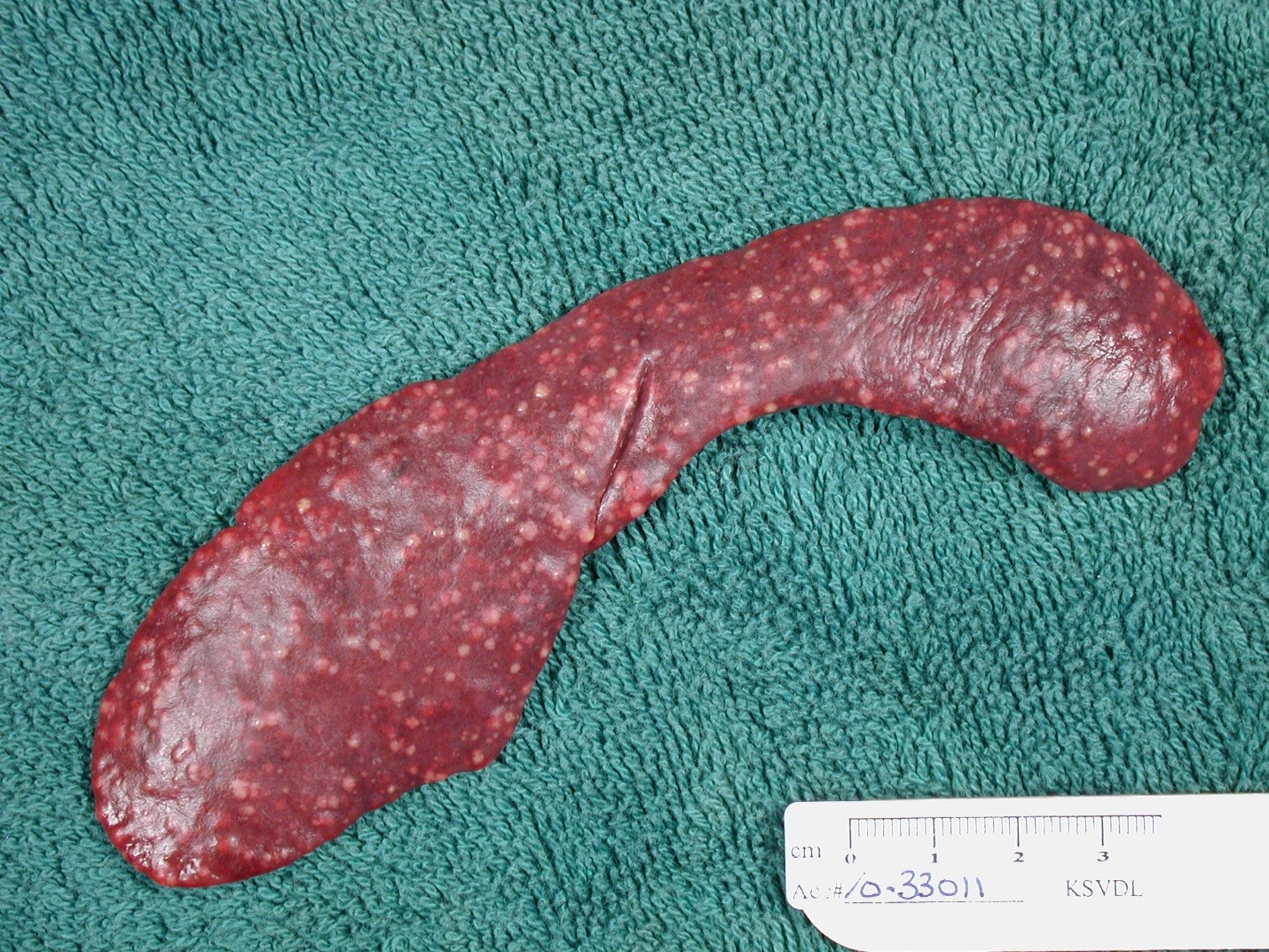
Feline Tularemia
By Dr. Kelli Almes
Tularemia, caused by Francisella tularensis, is observed in cats during the warm summer months at KSVDL and local veterinary clinics. These cats can become gravely ill, and the disease often results in death in the absence of early treatment. This report highlights one recent case submitted to KSVDL for necropsy and ancillary testing.
History: A 3-year-old spayed female domestic short hair indoor cat died upon returning home ill after escaping to the outdoors for several days. At the time of submission, human exposure to the cat was reported, as the owner had attempted to syringe feed and water the cat.
 |
Figure 1 |
Clinical Signs: The course of clinical disease was quite short, less than 36 hours, and included dysphagia, generalized muscle stiffness, lateral recumbency, general unresponsiveness, and severely enlarged submandibular lymph nodes.
Diagnostics: The cat was submitted for necropsy and ancillary testing on the day of death. Bilaterally, the submandibular lymph nodes were markedly enlarged at 3-4X normal size. On cut section, these lymph nodes contained multifocal areas of necrosis. The mesenteric and tracheobronchial lymph nodes were also affected. Multifocal pinpoint to 2mm diameter raised areas of necrosis were scattered throughout the spleen (Figure 1). Culture of the spleen at KSVDL was suspect for F. tularensis, and was subsequently confirmed by PCR and culture at the Center for Disease Control.
Take Home Message: Tularemia is an easily transmitted, zoonotic disease in our region. Cats and rabbits are the most susceptible animal species and the most common F. tularensis infected animals submitted to KSVDL. Although somewhat rare, dogs are also susceptible. A dog has been diagnosed by KSVDL in 2017. As in the case reported here, indoor-only cats are not frequently administered flea and tick prevention leaving them more susceptible to infection if they go outside. The most common clinical signs are fever and lethargy. Cats may contract the disease not only from ticks, but also from ingesting infected rabbits. A definitive diagnosis can be reached with culture or immunohistochemistry at KSVDL.
